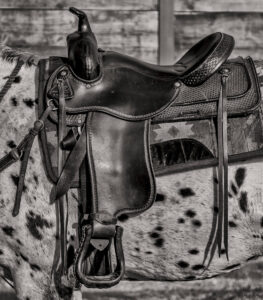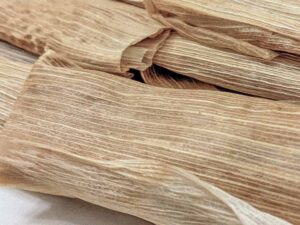Seven Suggestions for the
Beginning Quilter
(and Anyone Else Feeling Stressed)
Dr. Dixie Dillon Lane
It’s astonishing how busy a “slow” life can become.
In a thick context of children, chickens, charity, and chores, of diligent wage-work and mountains of laundry, the reality is that our best intentions are not always enough to keep our enterprise from overcoming our purpose. The difference between a full life and a burdened one is but a hair’s-breadth. Forget who we are and why we value what we do and we risk, in the modern term, burning out.
An important antidote to this is, of course, leisure, which we value for its cultural and restorative powers. But leisure is easily compromised by more pressing concerns. Even when these concerns are good ones — a fussy baby to soothe, work to organize, lessons to plan, kindling to split — in some seasons of life, it can be hard to catch your breath.
In these times, I humbly suggest that you learn to quilt.
Yes, it seems crazy. Do something challenging, time-consuming, and not strictly necessary when you already have a (more than) full plate? No, thanks.
But when you are having trouble finding respite, the solution may not be slamming doors and muttering under your breath, and may not even be a nap (though that’s good, too). Rather, seek refreshment by turning just a small portion of your industriousness toward creating something beautiful just for the sake of it being so. And if you choose making a quilt, even through only a stitch or two a day, you may also discover a metaphor for sewing together a life that is both intentional and nurturing.
Making even a very basic quilt gives a person a chance to practice turning hardships inside out and, in the end, creates something that warms the eye, the body, and the heart.
Here are seven suggestions to consider, in rough quilt-making order:
1. Honor both your limits and your resources.
In life, you choose to follow a vocation. You also choose a worldview, a place to live, and work to do. You are a free actor, but your choices are constrained by certain limits of personality, ability, wealth, education, family, place, et cetera.
In quilting, you must begin by seeking a beautiful pattern, but a wise quilter also takes into account his or her limits. If you are a beginner, choose a simple pattern such as a four-patch, rail fence, or pinwheel, or even choose a jelly roll pattern, which uses only precut strips. If you are lucky enough to know a quilter, ask her or him to guide you. (If not, the Missouri Star Quilt Company “quilt snips” videos, available online, are a wonderful place to start. Missouri Star also has helpful longer videos.)
It’s also a good idea not to choose a king-sized quilt for your first project. A baby quilt might be a better choice since it is a small but meaningful project that does not need to be perfect because somebody is going to spit up on it. A lot.
Similarly, when choosing fabric we should first examine our resources. Sometimes we have the time and funds to go to the store and buy a few yards of lovely fabric just for our sweet little baby quilt. Sometimes we can “order up” life, too, and pay its costs easily.
Other times we look for what we need among what we already have. In quilting, this means scanning your home for stiffish unused cottons, i.e. old dress shirts, sundresses, and sheets. You will want things that are 100% cotton (but not the stretchy, T-shirt kind). Or check the thrift store for beautiful sheets and tablecloths and shirts — you’ll be amazed at what you can find!
2. Don’t be afraid to take the plunge.
“Cut it till it bleeds” is good advice for writing, but also for quilting and for our schedules. We all learn, over time, that paring our attachments down causes pain in the moment but strengthens us in the long run.
Quilting involves a lot of cutting. You must take that lovely fabric, all spread out and beautiful, and chop it up. You might even make a terrible mistake and cut the wrong thing, or the wrong way. And then you might sew it together wrong, too! You may have to pick up some extra fabric to make up for errors and you will certainly have to rip out a seam or two.
But don’t let that keep you from getting started. Anything worth creating is more important than the mistakes you make on the way. Spend the three dollars on a seam ripper and don’t look back.
3. But do think things through.
You will want to do some prudent planning and preparation, however, before you cut. Decide whether you want your fabric to be all unwashed or all washed, and then either just iron it or wash and iron it. Next, outfit yourself with a sharp pair of scissors and, if you can, a rotary cutter, long and sturdy ruler, and cutting mat, and then start cutting. Keep your eye out for shortcuts as you approach each piece. For example, if you need three ten-inch squares, cut a yard-long strip 10 inches wide, and then turn it and cut it again in ten-inch increments.
How will you find time for this? You will find just ten minutes at a time, once a day or every other day. The first ten minutes after the baby falls asleep. The time it takes for the pot to boil. A few minutes when your spouse has the kids in the bathtub. Expect very little of yourself, but take just that little bit of time to work towards beauty and soon you will be amazed by the fruits of these moments. When you take those ten minutes, your mind will leave everything else behind, and you will be creating.
And at some point, you’ll also find an hour in the evening or two hours on a Sunday afternoon to put towards your project.
4. Don’t be discouraged when everything comes out backward.
In our early years, many of us become reliant on outside affirmation for our peace. We become this way unawares: we get an “A” on a college paper, or we do someone a favor, or we clean up a room, and we feel sure we did the right thing because we receive praise from those who notice our good choices.
When you become a parent, that all turns on its head. Now, when we do the wrong thing, we are praised, and when we do the right thing, we are criticized. It all seems backward. For example, what happens when your children whine, and so you decide to let them binge on ice cream and T.V. all morning? This is what happens: They are happy for several hours and completely quiet, except for when they are telling you you’re the best mom or dad ever. You get to put your feet up and drink hot coffee and read your book and maybe even vacuum. Yes, the kids might crash later, but you can always just put on another show when that happens. But what happens when they whine and you take a deep breath, control your anger, put down your book, and tell them “no,” as you know you (usually) should? They tell you you’re the worst ever, that’s what, and then your coffee goes stone-cold while you make them unload the dishwasher and do their schoolwork. They’ll thank you when they’re twenty-five. Maybe.
Quilting is the same way. In order to make the quilt turn out right, when we make a quilt block (“piece” it) we have to sew the fabric together wrong-side out. We must invert our momentary desire for pleasure in favor of wisdom and accept that things are difficult or even seem backward. But then afterward, we turn the fabric right-side out and see that all the raw edges have been enclosed and what is left is a beautiful patchwork of color. The colors and patterns of the fabric show all the better for the quilter’s self-discipline in sewing up all those fraying edges.
When you’re done, take the time to press your quilt blocks with an iron and to pin them carefully.
Then comes the pleasure of sewing them together with straight seams, unfolding the finished quilt top, and admiring your hard work. Press the seams on the back open or in alternate directions to make the quilt lie flat and not pull.
We all need a little variety in our lives, too, to keep us from pulling.
5. It’s not over till the job is done: quilt it down and bind it up.
To keep all our hard work in place, we need to restrain it with stitches and protect it with padding and backing. Sound familiar? A new habit, once built, must still be maintained. A life, once disciplined, still needs softness and a foundation to fall back on.
Layer your quilt top over soft cotton/polyester batting and a large piece of fabric backing. Pin this quilt sandwich together and then tie or stitch it down. Tying is the easiest method for beginners.
Finally, the quilt needs to be trimmed and the edges bound with a folded strip of cloth. You might also label the quilt. Check online for instructions, and consider doing these last parts by hand. This is your chance to muse on your quilt and on your life, reflecting on a job well done.
6. Expect wrinkles.
Although it takes care to make all the pieces of a quilt line up precisely, the quilter’s motto is, “Finished is better than perfect.” We do not seek perfection, which is only found in Heaven. What we do seek is to make something beautiful and useful (for so advises William Morris).
And in fact, when you wash a quilt for the first time, it loses its crispness and starts to crinkle. This is the process of “quilting up.” With each wash it will become slightly more wrinkled but also slightly softer. It will bear the marks of its story, and that will only make it dearer.
7. Don’t pack it away — give it away.
This quilt has served its first purpose – giving you a chance to nourish yourself by making something beautiful and pondering its meaning.
Now it is time for it to serve its second: to warm someone, to be a soft place for a tired body and a cheering burst of color for weary eyes.
Don’t pack away the fruits of your labor in tissue paper, as some artists do. Let it be used, and it will only become more beautiful.
You have taken the time to make something beautiful and useful, to others and to yourself. Now go drink that cold coffee.





















